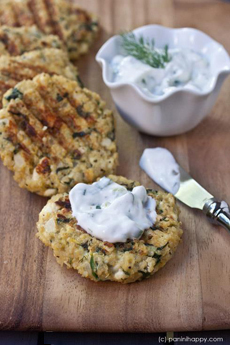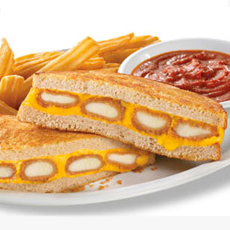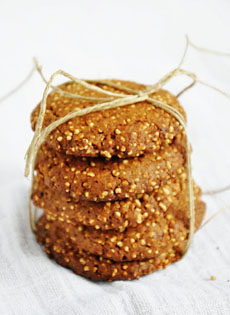|
Just because it’s National Whole Grains Month doesn’t mean you have to flock to the brown rice and whole wheat pasta. Good as they are, why not try something new—something you might enjoy as much or more? Because whole grains are not only good for you; they’re delicious.
Thousands of years ago, many more grains were cultivated; in modern times, the majority have fallen out of fashion. Yet, with focus on the important health benefits of whole grains and the recommended 3-5 servings daily, these largely-forgotten nutritional powerhouses call out for your attention.
All of the ancient grains are very healthful and excellent sources of protein and dietary fiber. They’re a less expensive way to add high protein to your diet, with minimal fat. You may know farro, quinoa and other newly “discovered” ancient grains, but how about these four?
1. Amaranth. Amaranth was first cultivated 8,000 years in Mesoamerica. Like quinoa, is actually a seed, not a grain. Like quinoa, it is a whole protein, containing all of the essential amino acids (the amino acid lysine is lacking in many grains); and is gluten free. Amaranth contains unusually high-quality protein and is higher in fiber than wheat, corn, rice, or soybeans. Use it place of corn grits in your polenta. Try this Amaranth Polenta with Wild Mushrooms recipe.
|
|

Quinoa cakes with spinach, feta and lemon-dill yogurt sauce is a healthier take on spanakopita. Photo courtesy PaniniHappy.com. Here’s the recipe. |
2. Kamut. Kamut is a trademarked term for khorasan wheat, an ancient relative of modern durum wheat. It originated in Egypt thousands of years ago. Legend says that Noah brought khorasan wheat on the ark, hence the nickname “Prophet’s Wheat.” The grain has inherent sweetness and a buttery taste; it also delivers iron, magnesium, selenium and zinc, plus 7 grams of protein per serving. Try using it in a vegetarian main course, such as Kamut Grain and Shiitake Risotto with Thyme.
|

Banana bread made with teff. Here’s the
recipe. Photo courtesy
52KitchenAdventures.com. |
|
3. Millet. Millet was cultivated in China some 10,000 years ago, making it one of the earliest cultivated grains. It was revered in ancient China as one of five sacred crops*. Whole grain millet is a good source of protein, essential amino acids and fiber. Quick-cooking, easily digested and naturally gluten free, millet has a mild, sweet flavor and can be served in sweet or savory preparations. Try it as a hot breakfast cereal. Serve it as an alternative to rice in salads and stir-fries. Serve millet with a drizzle of olive oil, and a dash of salt and pepper in place of mashed potatoes. Add a crunch to deviled eggs, salads and other recipes with toasted millet seeds (recipe). You can also add uncooked millet to breads for a crunchy texture and a hint of sweetness.
|
|
4. Teff. Teff is an ancient North African cereal grass, and the smallest grain in the world. The germ and bran, where the nutrients are concentrated, account for a much larger volume of the seed compared to more familiar grains, which provides its “nutritional powerhouse” standing. One serving of whole grain teff averages 4 grams of dietary fiber, 7 grams of protein and nearly one quarter of our suggested daily calcium intake. Cook or bake with it: Here’s a delicious Apple and Pear Crisp made with teff.
There’s more to consider, of course. Here’s a complete list of whole grains:
Amaranth, barley (but not pearled barley), buckwheat (kasha), bulgur (cracked wheat), chia/Salba®†, corn (whole grain corn or cornmeal, yellow or white, but not grits), farro (emmer wheat), flaxseed, grano, hemp, Kamut® (khorasan wheat), millet, oats (oatmeal, whole or rolled oats), popcorn, quinoa, rice (black, brown, red, wild), rye (whole), spelt, sorghum, teff, triticale (a barley/wheat hybrid), whole wheat.
*The list varies by source. The Classic of Rites, compiled by Confucius in the 6th century B.C.E., lists broomcorn, foxtail millet, hemp, soybeans and wheat.
|
|








